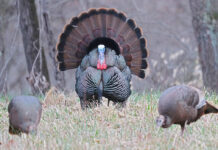Good pictures don’t just happen. And, too, the best camera can’t take a good picture on its own. Good pictures are born in the eye of the photographer and all the rest is basic, easily learned technique.
Let’s talk about cameras first. The best camera for any person without exception is the one that the person has. Cheap or expensive, a camera is simply a box with a trigger.
Of course, the technology has changed and continues to change, but keep this in mind — a camera will still do what it always did so unless it is actually faulty or lacking in some way, keep it and use it.
If in the market
If you simply must a have new camera, select one that meets your needs and wallet. Go digital, that’s a given.
In most cases, the quality of the lens is the real difference in cameras. The higher the pixel rating, the better the picture quality when printed in larger sizes. For the most part, you and I can’t tell the difference between pictures taken with cameras of various pixel ratings.
I also find the battery compartment to be a key element. I never buy a camera that has rechargeable batteries because my camera batteries only suffer sudden death when I am far away from an outlet, charger, or anything that can help.
On the other hand, I always try to remember to pack or pocket an extra set of fresh batteries.
Learn the basics
Take the time to learn to learn how to use some basic features. Learn how to use the timed shutter so you can join the gang for a group photo.
Next, find out what to move, push, or click to turn the flash on or off. When you take that picture of a happy fisherman and his or her catch, you’ll want to be sure to flash the picture, especially if your subject is in bright sunlight, which means serious shadow problems without a flash.
Eye of beholder
Now, the eye thing. In the minutes before touching the shutter decide what the subject is of your picture? Is it the house you vacationed in or is it the person you vacationed with? If it is the house, you might show your person in the picture as he or she points to the house from the corner of the photo but don’t dominate the image with human when it is the house you want to show.
On the other hand, if the subject of the shot is the person then you might have the house in the background but in a less conspicuous way.
There are a few basic composition rules time tested by artists and photographers.
The rule of thirds is the most basic of basic. As you look through the viewfinder or scan the screen, mentally divide the image into three sections across and vertically. Any of the four intersections of the imaginary lines is the ideal place to frame your selected subject. Try it, because it works.
Another basic is to focus on you subject while leaving the background or immediate foreground out of focus. This is a hard technique to use with pocket cameras that seem to focus on everything from near to far, but easier with a larger camera that features manual focus.
The foundation of using basic composition techniques is to steer the viewer of any art or photo to the subject of the piece. Let’s say your subject is your buddy as he fishes. If you could catch him in mid-cast with the fishing rod pointed into one corner of the picture, especially if it appears to be pointed at or near the camera, the line created by the line and or rod will lead one’s eye right to the fisherman.
The same basic idea can be used by shooting a photo down a fence line that leads the viewer to you subject.
Although using good, proven technique is a way to better photography don’t work too hard to use them. The best shots are often those shot by pure chance so blast away. Take three of everything and print one.
If you aren’t carrying a camera on every hike, hunt, or fishing trip, you are missing half the fun — and the memories.












